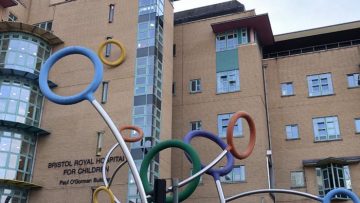Ivor Grattan-Guinness
JOHNS HOPKINS UNIVERSITY PRESS 2009, 392 PAGES
PRICE (PAPERBACK) £18.00 ISBN 978-0-80-189248-6
 In this volume Ivor Grattan-Guinness collects together a range of papers spanning forty years of his distinguished career as a historian of mathematics. The central theme linking chapters in the first two sections (the ‘Highways’ and ‘Pathways’ of the subtitle) is the place of history in mathematical education. The author criticises accounts which conflate ‘history’ (the development of a particular piece of work) with ‘heritage’ (the impact of that work on future mathematics). While both approaches are valid in their own right, conflating the two leads to error, projecting the anachronistic concerns and ideas of later mathematicians onto their predecessors. For instance, it may be useful for mathematicians to think of Euclid’s geometry in algebraic terms, but historians will misunderstand his work if they forget that such notation was a later development and could not have influenced a writer in the third century BCE. Between history and heritage Grattan-Guinness argues for an intermediate position which he terms ‘history-satire’. This exploits the pedagogical advantages of translating past writers into the terms of modern mathematics while making it clear to the students that this reading is a convenient fiction which skirts over significant historical issues.
In this volume Ivor Grattan-Guinness collects together a range of papers spanning forty years of his distinguished career as a historian of mathematics. The central theme linking chapters in the first two sections (the ‘Highways’ and ‘Pathways’ of the subtitle) is the place of history in mathematical education. The author criticises accounts which conflate ‘history’ (the development of a particular piece of work) with ‘heritage’ (the impact of that work on future mathematics). While both approaches are valid in their own right, conflating the two leads to error, projecting the anachronistic concerns and ideas of later mathematicians onto their predecessors. For instance, it may be useful for mathematicians to think of Euclid’s geometry in algebraic terms, but historians will misunderstand his work if they forget that such notation was a later development and could not have influenced a writer in the third century BCE. Between history and heritage Grattan-Guinness argues for an intermediate position which he terms ‘history-satire’. This exploits the pedagogical advantages of translating past writers into the terms of modern mathematics while making it clear to the students that this reading is a convenient fiction which skirts over significant historical issues.
The case studies used to illustrate this approach are particularly interesting, especially the two on Zeno’s Paradox and the development of calculus. The reader may wonder, however, whether these accounts would be better used to deepen the understanding of a student who already grasps the basics of a theory rather than in the initial teaching. Nevertheless, the case is well-argued and the discontinuities inevitable when collating papers written decades apart are minimised by extensive internal cross-referencing.
The third and final section of the book, the ‘Byways’, breaks away from the theme of education which focussed previous chapters to discuss Christianity and music. The engagement of mathematics and numerology with Christian scripture, Freemasonry and Mozart receives special attention. Grattan-Guinness takes care to show that the interaction of mathematics with these other areas of human study and culture was reciprocal, giving an admirably clear discussion of the different senses in which maths can be said to have influenced and to have been influenced by non-mathematical thought. These concluding papers offer a fascinating overview of a rarely discussed area of history.
Overall, this book will be appreciated by anyone with an interest in mathematical history and education, while the wide-ranging bibliographies for each chapter provide a valuable guide for further reading.
Paul Taylor
Mathematics Today June 2011
Routes of Learning: Highways, Pathways and Byways in the History of Mathematics can be purchased at Amazon.co.uk



